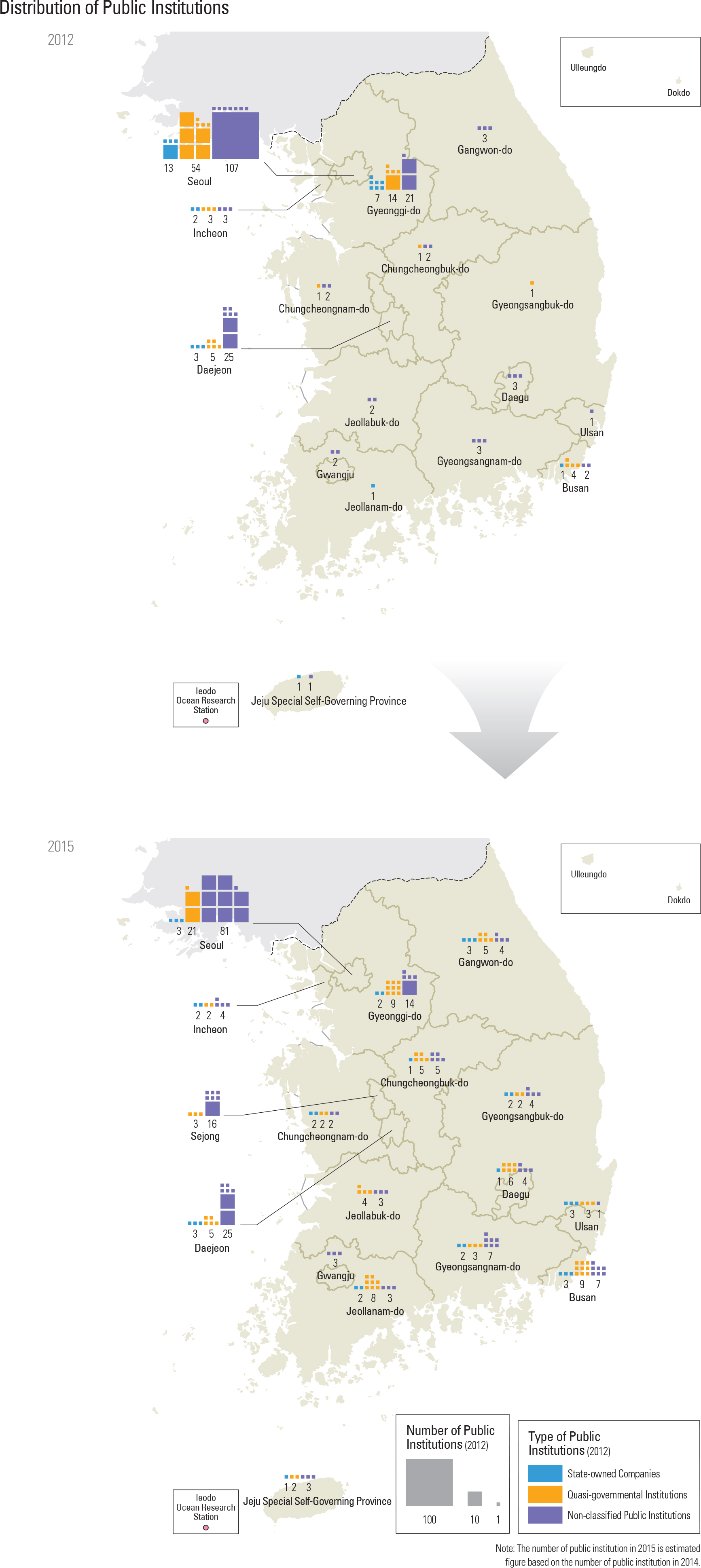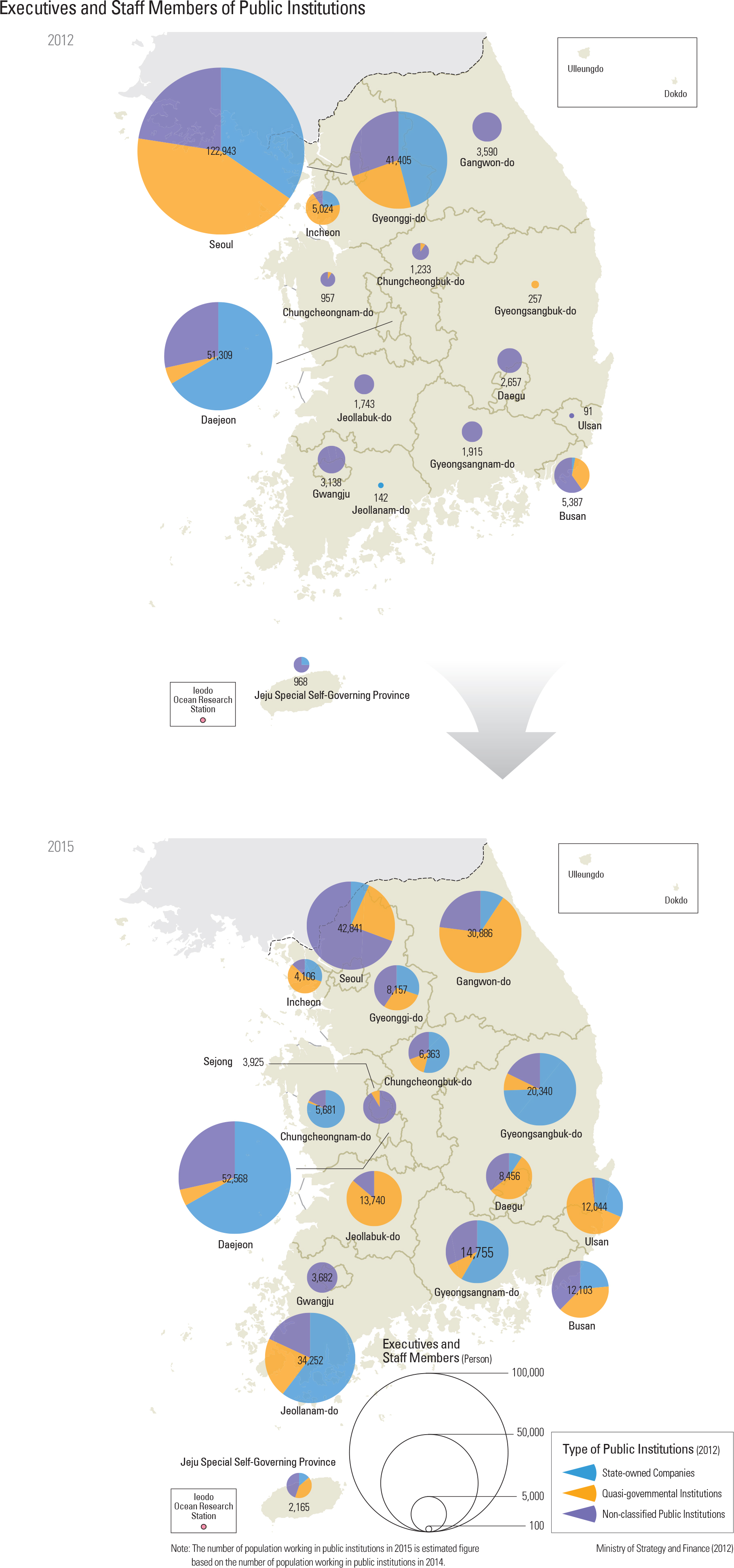Public Institutions are categorized by type: stateowned companies (market-based public corporations and quasi-market-based public corporations): quasigovernmental institutions (fund-management-based quasi-governmental institutions and commissionedservice- based quasi-governmental institutions), and finally non-classified public institutions. Among 288 institutions in total, 28 state-owned companies and 83 quasi-governmental institutions account for 9.7% and 28.8% of the public institutions, respectively. The number of non-classified institutions is 177 (61.5%).
In terms of regional distribution, the Seoul metropolitan area was once home to three quarters (224: 77.8%) of Korean public institutions: 174 (60.4%), 8 (2.8%) and 42 (14.6%) in Seoul, Incheon and Gyeonggi-do, respectively. While there are 35 (11.5%) institutions in Daejeon, the other regions account for no more than 3%. Such distribution between the two regions is evidence of a highly polarized pattern that had emerged by the early 2010s. For the last five decades, South Korea has followed an economic development strategy that concentrated primarily on the capital area. However, this approach has been replaced more recently by a governmental strategy based on the relocation of public institutions in a manner that will ideally result in more balanced national development.
A total of 154 public institutions have been subject to relocation to either the Sejong Special Autonomous City, ten other innovative cities, or other regions up to November 2014. Each destination was designated by the regional characteristics.
As of November 2014, 73 public institutions have already been relocated, and the transfer will be mostly completed in 2015. The two maps above show the change from the unipolar structure to a more balanced regional distribution. Once completed, the concentration ratio of the agencies in the central capital area will decrease from 77.8% (224 of 288) to 45.6% (138 of 302). Therefore, it seems clear that the relocation of public institutions is a key factor in helping to resolve the longstanding regional economic imbalance.

